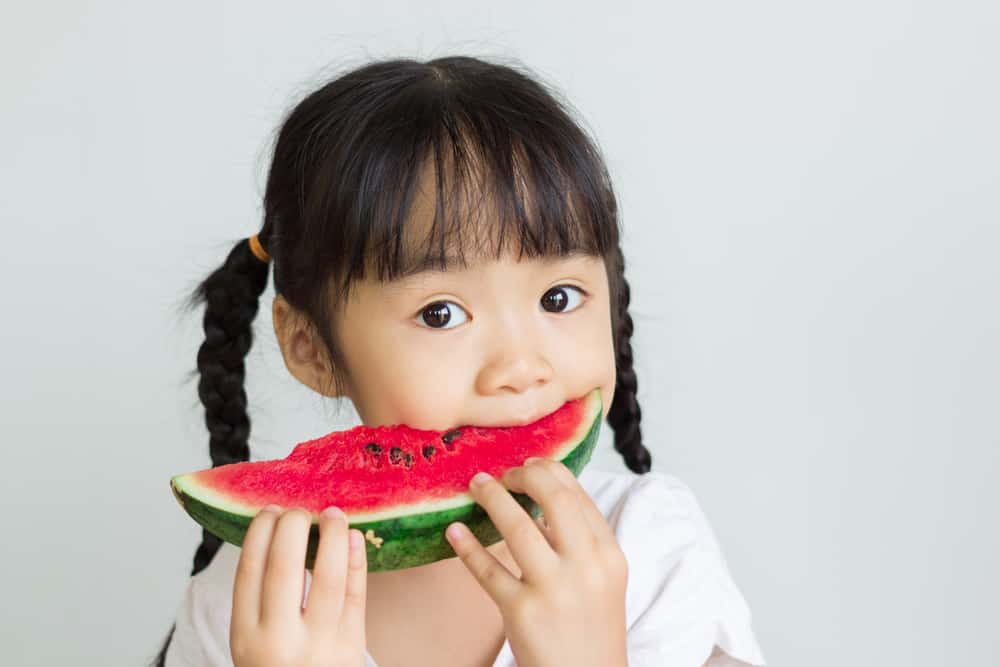Guide to Designing a Healthy Diet for Toddlers

Toddlers are indeed actively playing here and there. So, so that your toddler’s development runs optimally, proper nutritional intake is needed. You can start by designing healthy eating patterns for toddlers from an early age. Not only supports their development, a healthy diet for toddlers can also prevent obesity, malnutrition, and other health problems later in life.
If you are confused about how to get started, check out the guide below.
Important nutrition to support toddler growth

Not much different from adults, a healthy diet for toddlers must also adhere to the principle of balanced nutrition. The following are various important nutrients to support the growth of toddlers and their sources.
Protein
Protein plays an important role in building and repairing damaged tissue. Not only that, protein also plays a role in boosting a child’s immune system. Therefore, adequate protein intake can make a child’s immune system stronger, so that he doesn’t get sick easily.
You can get this one nutrient from food, both from vegetable and animal sources. Meat, chicken, fish, eggs, seafood, and nuts are a rich source of protein.
Carbohydrate
Carbohydrates serve as the body’s main energy material. These nutrients are divided into two forms, namely simple carbohydrates and complex carbohydrates. Simple carbohydrates can be found in sugar or sweet foods, while complex carbohydrates can be found in staple foods that are consumed every day, such as rice, potatoes, cassava, corn, pasta, and the like.
Your child should limit simple carbohydrates to avoid diabetes and obesity due to eating too many sugary foods.
Fiber
Fiber helps smooth the digestive system, lowers cholesterol levels, and controls blood sugar levels. Fiber is mostly contained in vegetables and fruits. So, make it a habit for your child to eat fruits and vegetables every day.
Choose fresh fruit and avoid eating fruit that has added sugar, such as packaged fruit juices, canned fruit, dried fruit, and candied fruit. In addition, make it a habit to eat fruits and vegetables with a variety of colors every day. The reason is, each color in fruit and vegetables contains different nutrients. For example, a yellow color in a lemon indicates that this fruit is rich in vitamin C. While a dark green vegetable means that it is high in iron.
Fat
Not always bad, fat is also needed by the body for health. Yes, proper fat intake is needed to help absorb vitamins, regulate body temperature, a source of energy, and nutrients for your little one’s brain. Make sure your child is getting a good fat intake.
You can get good fats, aka unsaturated fats, from tuna, sardines, anchovies, tuna, snapper, salmon, avocado, nuts, and olive oil.
What is the ideal meal portion for toddlers?

Toddlers need about 1,000-1,500 kcal of calories per day depending on their age, gender, and physical activity. So, to meet these calorie needs, here are examples of food portions that can be given to children in one day:
- 2-3 servings of carbohydrates. One portion is equivalent to 100 grams or ¾ glass of star fruit.
- Protein 4–5 servings. One portion is equivalent to 35-50 grams. You can offer one chicken thigh or meat half the size of an adult’s hand.
- Oil 2-5 tsp.
- Fruits ½-2 servings. One serving is the same as a large orange or a slice of watermelon.
- Vegetables ½-2 servings. One portion is equivalent to one bowl of cooked vegetables without sauce.
- Dairy products 1–2 servings. One portion is equivalent to 150-200 ml or a glass of star fruit.
How many times should a toddler ideally eat?

Toddlers should ideally eat 5-6 times a day. Parents can divide it into:
- Breakfast
- Late afternoon snack
- Lunch
- Midday snack
- Dinner
- Snack before bed
You can skip the evening snack when the child is asleep. Some healthy snacks that you can give your little one are fruit, vegetables, pudding, yogurt, cheese, biscuits, and milk.
Various dietary restrictions for toddlers

Here are some dietary restrictions for toddlers that parents should know:
- Foods high in sugar such as candy, juice with added sugar, chocolate, ice cream, soda, and so on. Eating too much sugar will lead to obesity, insulin resistance, and diabetes.
- Foods high in saturated and trans fatty acids such as fried foods, pizza, and martabak. Various types of food can cause an increase in cholesterol and the risk of heart disease. Instead, choose foods with healthy fats such as olive oil, nuts, and avocado.
- Junk foodor ready-to-eat food. These foods are usually high in carbohydrates and salt, but low in fiber, vitamins and minerals. Therefore, if consumed in excess it can lead to obesity and other diseases caused by obesity. Apart from causing health problems, obesity can also cause children to become insecure and tend to withdraw from their surroundings.
- Foods high in salt. This type of food can build up water in the body, so that the stomach feels more bloated and bloated. Foods high in salt can also cause hypertension and blood vessel disorders.
Implementing a healthy diet for toddlers from an early age

A healthy diet for toddlers must be used from childhood. So that your little one gets used to adopting a healthy diet, the mother and family at home must also play a role. Remember, children tend to imitate their parents or the closest people around them. So, give an example of eating good foods with the correct eating pattern and selection.
Hello Health Group and Hello Sehat do not provide medical advice, diagnosis or treatment. Please check our editorial policy page for more detailed information.